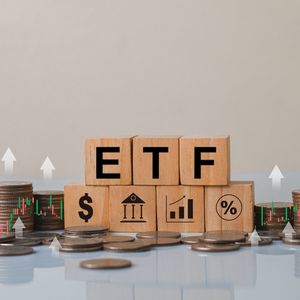
Summary ProShares UltraShort Ether ETF is designed for short-term, leveraged bearish trades on Ether, not for long-term holding or income. ETHD's reported 242% trailing yield is misleading, reflecting past payouts on a price that collapsed 93%, and is not indicative of future returns. The fund's structure and daily reset make it unsuitable for long-term investors; leveraged ETFs like ETHD are best used as intraday trading tools. Investors should focus on the internal mechanics and risks of leveraged ETFs, avoiding reliance on eye-catching yields or using them for buy-and-hold strategies. Details matter How a machine works internally is what tells us what the output of the machine will be. Given that most financial instruments are indeed machines with their own internal working parts this is also true of such financial instruments. We need to grasp how those internal parts interact to gain a good idea of what the likely outcome is going to be. This always does mean a certain amount of boring detail but there we are. Proshares UltraShort Ether ETF ( ETHD ) This is, obviously enough, an exchange traded fund. This means that it's open ended - we buy and our money goes into the fund, we sell and it comes out. This potentially could lead to a problem - if many sell, then the fund might have to dump positions in order to pay out. Such dumping - at firesale prices - then damages the value of the fund, spooking more selling, and so we get a cascade - just like a bank run. Whether this can in fact happen depends upon the liquidity of the underlying investments being made by the fund itself. Here they're in ether futures and derivatives - these are liquid enough that it's not going to be a problem. Another feature of an ETF is that it will always trade no more than tenths of a percent from net asset value. The aim here is to provide 2x the negative of the ether price movement. That's not been a good long term bet this past year. But it's also true that this is a trading tool, not a hold, something I'll go into in more detail. Some days this was a very good bet - or perhaps we should say day trade or speculation. For something to day trade, the spread looks a little wide, at 0.3%. But that's more a function of that spread being a penny on a $3 to $4 stock price . ETHD spread (Nasdaq) We can trade in near $100,000 lots, so there's plenty of liquidity. Actual trade is in the 60 million pieces a day range currently. Don't be fooled by the reported yield The real point I want to get across here - a product of that attention to the necessary details - is that we must not get fooled by the reported yield. For this looks very tempting indeed: Yield (TTM) 242.88% Hold for 5 months, and everything after that is house money. Which would be very exciting, yes, but that's not the way it works, of course. This is the cash dividend of the past 12 months compared to the current market price - the trailing yield. And if the market price has collapsed over the past 12 months then the sums get a little misleading. And, yes, the price has collapsed - down 93% in fact, over 12 months. So, we're counting dividends that might have been useful or reasonable 8 and 10 months ago as against a market price down 90%. Which bumps up that trailing yield. The actual dividends paid in 12 months are here . About $9.15 cents for the past year. At a price a year back of some $55, that's a nice enough yield - near 17%. But it's also not 242%, and it's also not really making up for the 92% fall in capital value. To gain an idea - and it will only be an idea because the future is uncertain - of the forward yield, what we think we might get, we can just annualize the most recent payout. Which was 0.004 cents, x 12 gives us a yield of 1.4% on a $3.50 stock. No, you're right, that's not correct, but that is indicative. So, attention to detail. Where - entirely correctly - the trailing yield is listed as 240%, that's actually nothing, at all, to do with what we might be able to expect in the future. The other way to put this is that this isn't a dividend stock. It wasn't in the past and it's most, most, unlikely to be in the future. The internals at ETHD The aim is to produce 2x the bear performance of ether. This is, of course, achieved by holding derivatives : ETHD holdings (ProShares) The expense ratio is 0.99%, which for an ETF dealing in options, etc positions is reasonable enough - fairly middle of the road. But we must always remember that fees aren't the point, it's returns after fees that are. Low fees for bad returns aren't worth paying and high fees for outperformance eminently so. The aim here? This ProShares ETF seeks daily investment results that correspond, before fees and expenses, to -2x the daily performance of its underlying benchmark (the “Daily Target”). All well and good but note that "daily" there. This is a short term speculative tool, not a long term investment hold. This is so much so that Seeking Alpha gives a warning about it : For example, consider the example of a 3x leveraged ETF where the benchmark rises from 100 to 102 (+2%) on day-1, and falls from 102 back to 100 (-1.96%) on day-2. The benchmark index is back to its original level of 100, so has flat performance. For the leveraged ETF, however, the return would be negative. To illustrate, after the first day of trading, an initial $100 investment on a 3x leveraged ETF would rise to $106. $100 initial + (($100 x 2% index return) x 3) = $106 The next day the 3x leveraged ETF would drop 5.88% (3 x -1.96%), resulting in a value of only $99.77. $106 - 5.88% = $99.77 Even though the benchmark index was flat, the leveraged ETF would have resulted in a loss of -0.23% over these 2 days. $99.77 - $100 initial value = $-0.23 As does the SEC : Leveraged and inverse ETFs typically are designed to achieve their stated performance objectives on a daily basis. Some investors might invest in these ETFs with the expectation that the ETFs may meet their stated daily performance objectives over the long term as well. Investors should be aware that performance of these ETFs over a period longer than one day can differ significantly from their stated daily performance objectives and may potentially expose investors to significant and sudden losses. So, be warned. As to why this is true, the costs of running a leveraged, or a bear, position include two things. One is the daily price reset. The other is that they're gaining these positions through derivatives - they have to be. But derivatives have a time value - a time value which, obviously, expires over time. Derivatives - whether packaged into an ETF or other fund structure, or directly - are excellent ways of gaining leverage for the short term. The longer the period we try to use them, the more expensive they become. So, for longer speculative periods, do not use derivatives - nor funds themselves using derivatives. The proof of the long term holding problem If - and do note if! - these leveraged and bear ETFs were good long term holdings then the bull and bear versions would produce roughly opposite returns. Sure, there's be some loss from management fees but if the one was 90% down then the other, the inverse, should be 90% up. Or, at least, around and about. So, are they? ETHD price (Seeking Alpha) Well, OK, the ether price has moved away from those trying to be bear. That's OK. But if we'd held the bull version over the same time - say as a pair - we should be roughly flat, right? Flat minus expenses SAY? ETHT price (Seeking Alpha) Ah, no, we're not, are we? If we'd held the pair over the year we'd be about 45% down. Which proves that the leveraged ETFs are not the way to hold long term positions. Why I'm wrong As I'm not saying do bet on ether, or don't (and you shouldn't believe me if I did. I'm the guy who said that bitcoin is over in Forbes back in 2013) then I can't be right or wrong on that idea. The price of ether is a perfectly sensible thing to speculate upon. But which way isn't something for me. But that is where I could be wrong is that ether could fall in which case ETHD is a fine way to play that as a short term position. My opinion I'm fine with a portfolio containing speculative positions - would even insist that a properly balanced one should. That means that speculative - derivative and leverage based - positions on crypto are equally fine with me. They should be minimal parts of such a balanced portfolio, of course. The spice and flavour after a pension has been assured perhaps. The use of leveraged bear ETFs like this one is to be taking a bear position intraday. That might be because we're long the underlying ETH. Or it might be just that we think there's going to be a price move - either a hedge or a naked speculation. But this instrument - this form of instrument - just isn't how to take long term positions, either bull or bear in anything. Even if it does work - and in a couple of instruments that tactic has - greater return would have been achieved by constructing the same exposure in a different way. Leveraged - bear - ETFs are short term trading tools and should be used that way. And as up above, the real point of this piece is that we should not get fooled by trailing yields. We need to grasp the details of the internal of the instrument - that way we can see, again as above, that that trailing yield really is no guide at all to the forward yield. You're absolutely correct, 243% is a very exciting yield. But that is the past 12 month cash distribution on a market price that has fallen 93%. The next 12 month distribution really isn't going to be like that at all.
